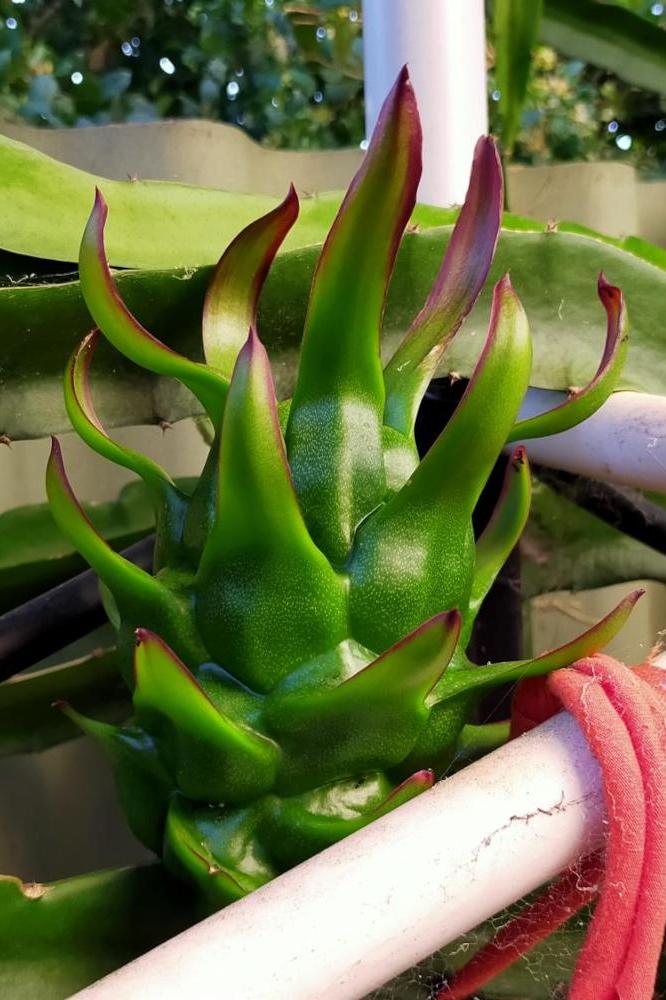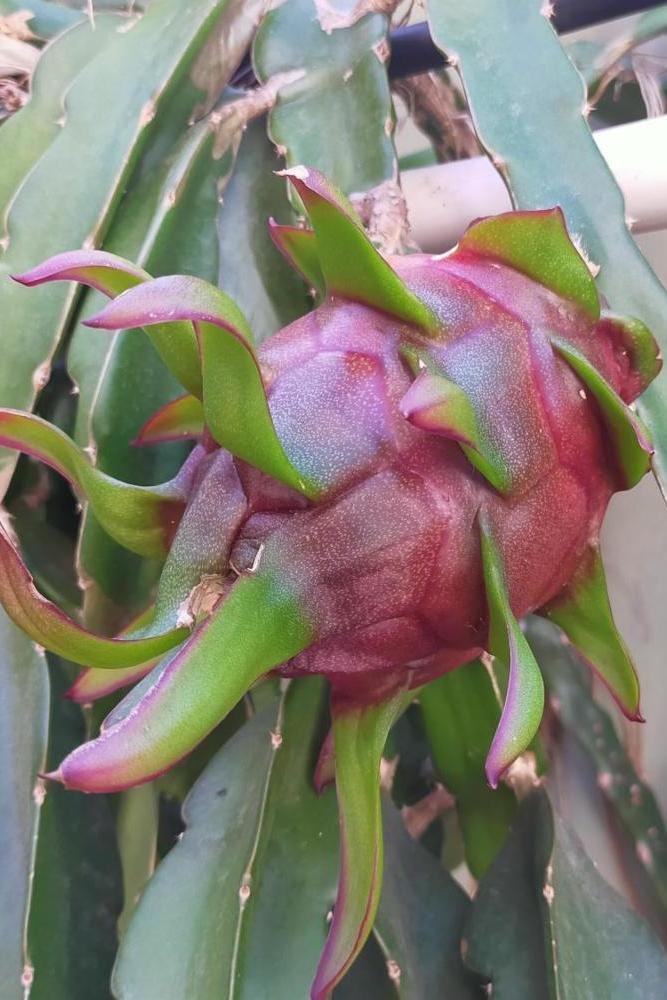Overview
Hylocereeae hybrid × H. polyrhizus, cv. Jade Red
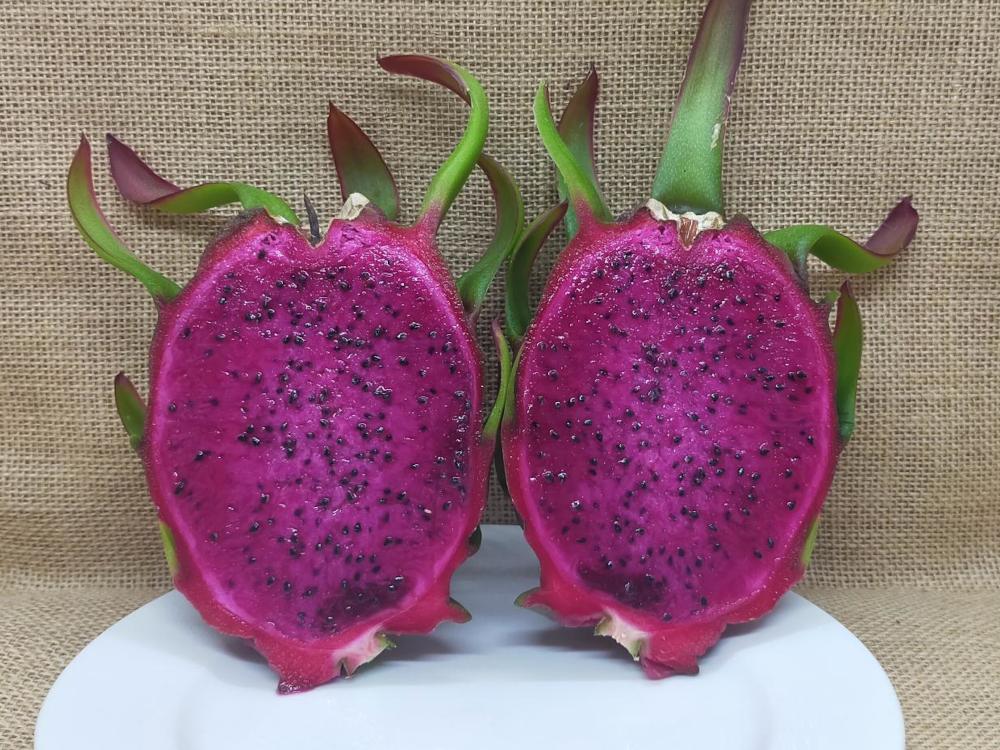

Other names: Red Jade
Pollination: self-sterile
This variety is quite new to the dragon fruiting world and was developed right here in Australia. It is a cross between the red-fleshed Hylocereus polyrhizus, and an unknown epiphyllum (Hylocereeae hybrid). This not
only
breaks the definition of a species (i.e., the largest group of organisms that can produce live, fertile offspring), but does this across different genera. What makes it even more remarkable is that it is one of the few,
coloured-flower dragon
fruit varieties that produces large, great-tasting fruit. The fruit has an incredibly smooth texture, seeming to melt in your mouth as it spurts out berry flavours.
This variety is a fast grower,
but does not have the thickest of stems. It seems to tolerate the sun and cold reasonably well. If you can get your hands on this variety, do not hesitate to do so.
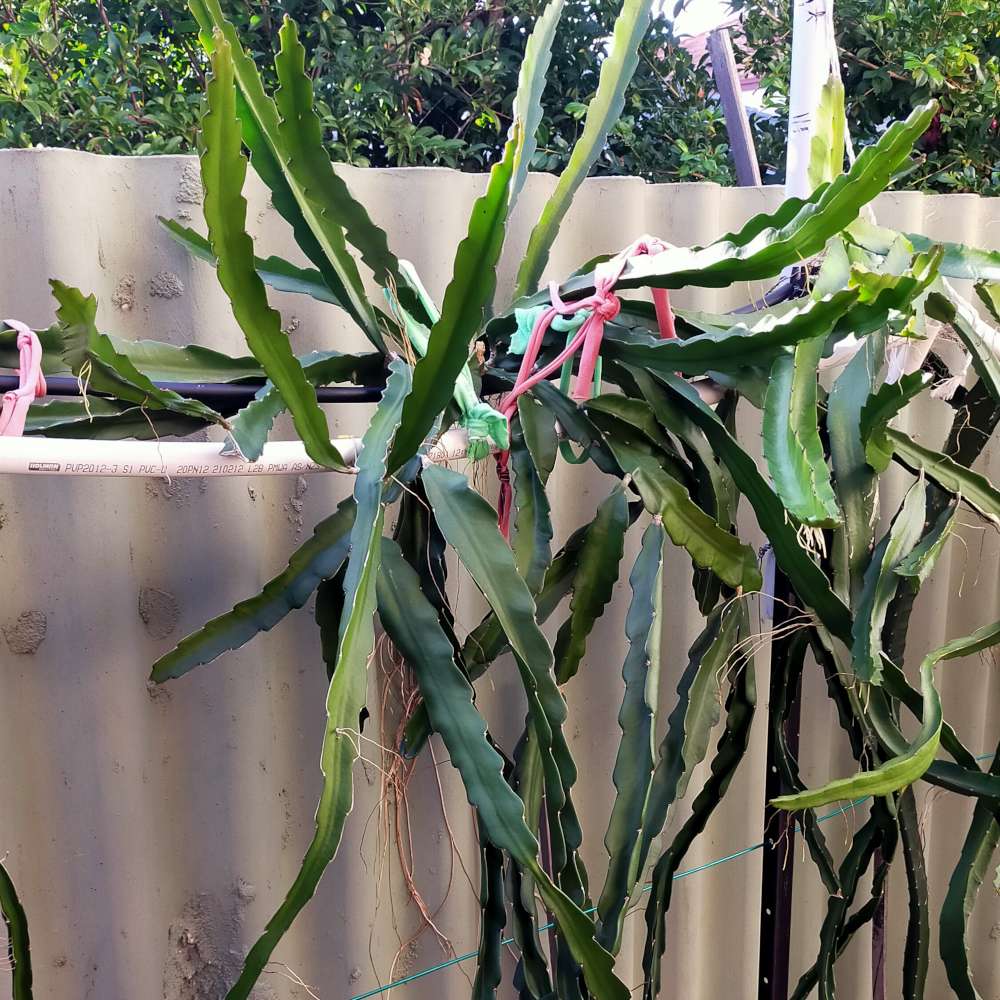
Buds
The first buds on Jade Red appeared before the plant was even thirteen months old from the day of planting a cutting. This is incredibly quick when compared to other varieties which can take multiple years before they begin fruiting.
However, Jade Red seems slow to reach full production.
To start with, the buds are not much different to that of Common Red, aside from the purple tips instead of red tips. However,
the
later stages of bud development set it firmly apart. Slowly the purple petals begin to
show themselves, bursting out of the top of the bud, before finally exploding into the flower.
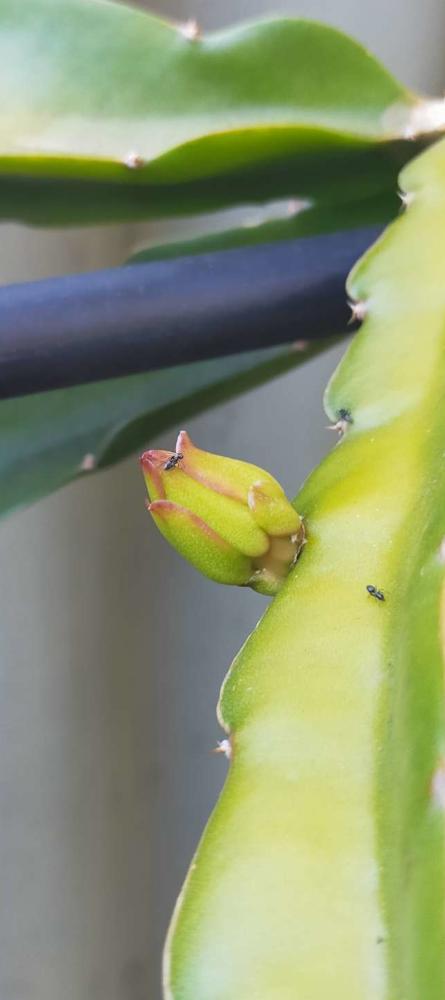
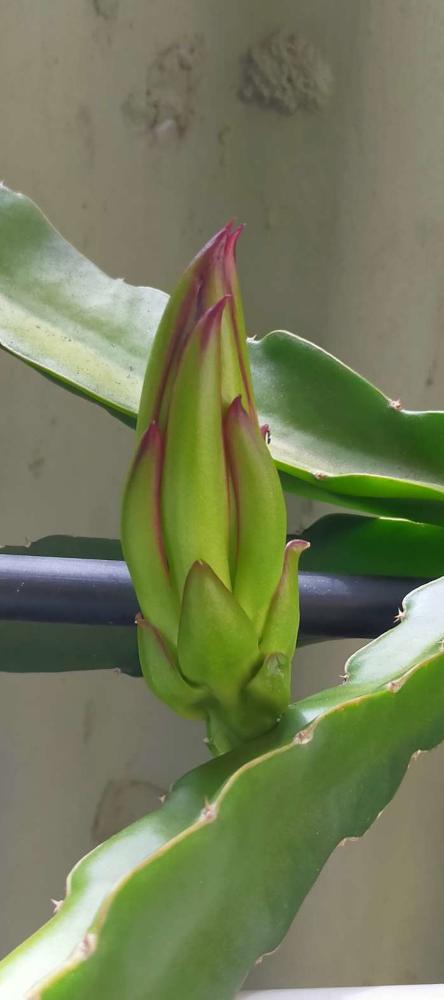
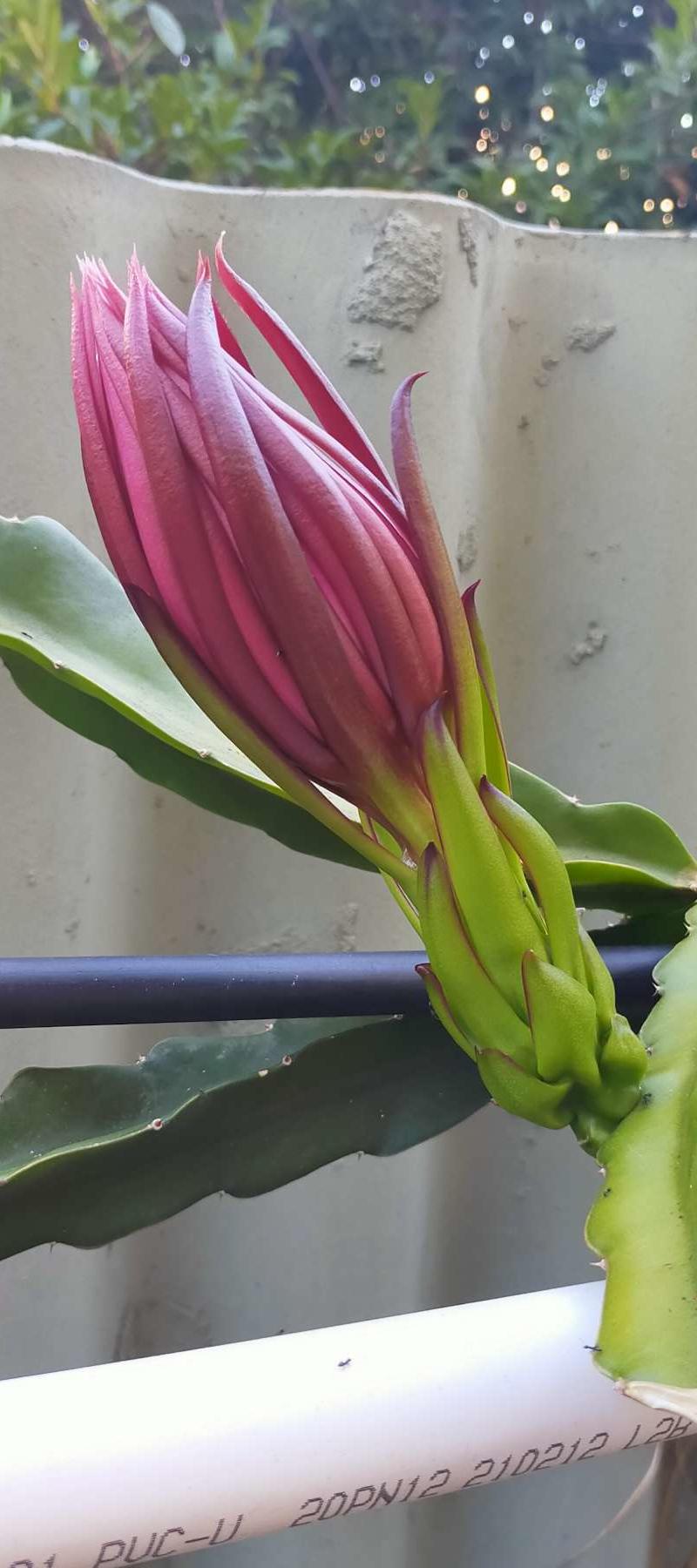
Flowers
Jade Red has a stunning purple flower that makes it worth your effort even without the fruit. While some sources say Jade Red is self-pollinating, the limited amount of pollen produced by the flower, and the fact that it is a hybrid,
make it much safer to cross pollinate. My guess is that without human intervention, a very small percentage of flowers will set, and the fruit will be of low quality.
Another interesting aspect of the flower is that it opens
unusually early for dragon fruit – around 5pm – perhaps due to its epiphyllum component. That is why my night flower picture is to the right of the day picture; by 7am in the morning the flower was nearly fully closed (the flower on
the
left is before fully opening, preceeding the night flower).
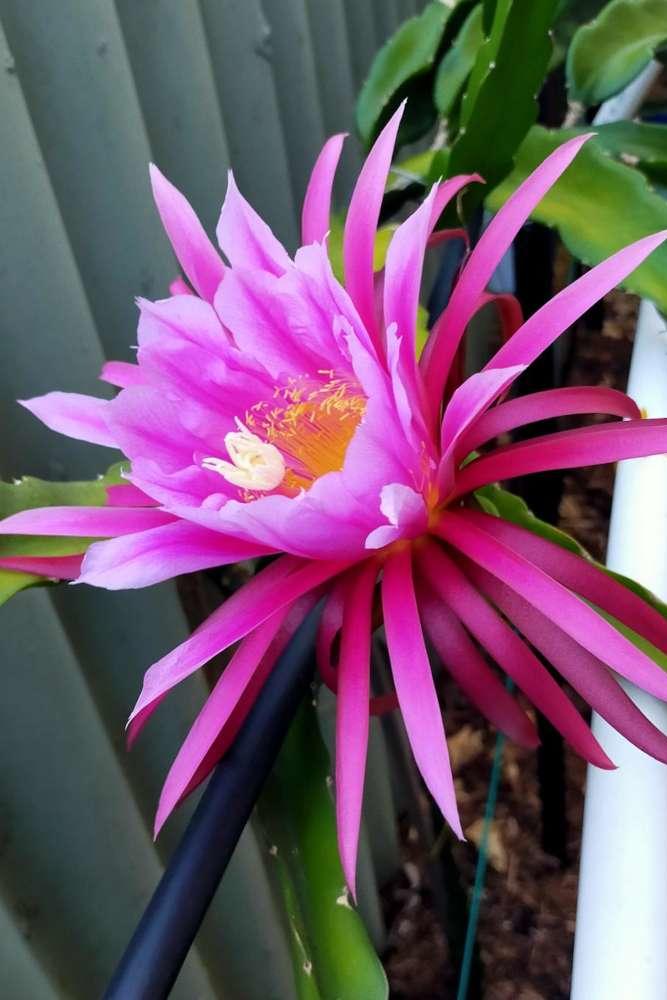
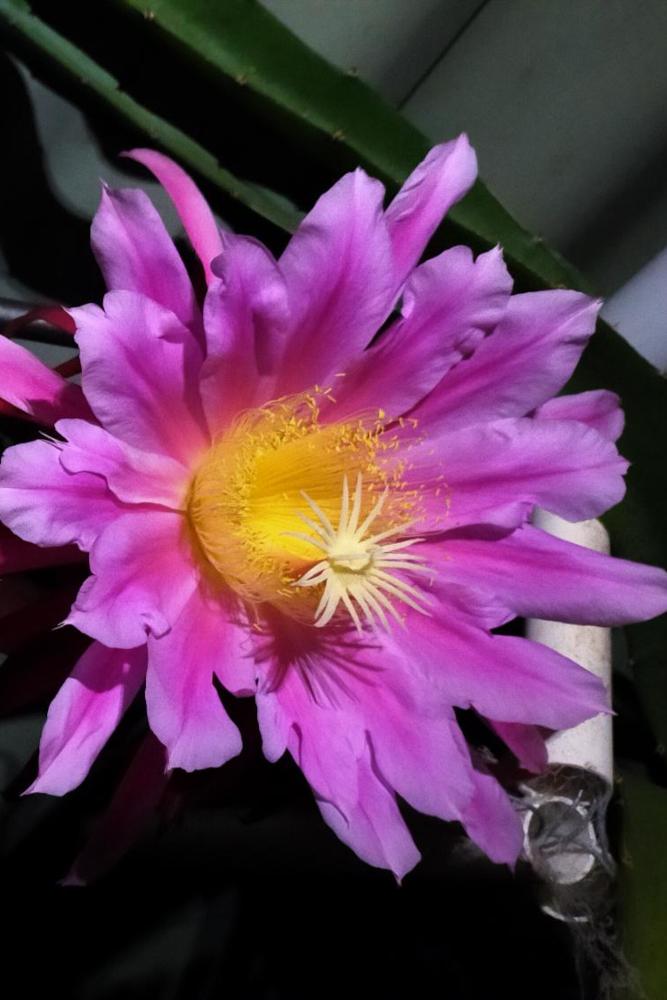
Fruit
So far, aside from the first fruit, Jade Red has produced fruit of around 400 grams, with impressively long bracts which make it really pop in the garden. However, it is the size that makes it desirable over most other
coloured-flower
dragon fruit varieties which have very small fruits.
The ripening process is like that of Common Red, although it seems to hold its colour much longer without splitting, which makes
over-ripeness a slight issue if you are not careful.
